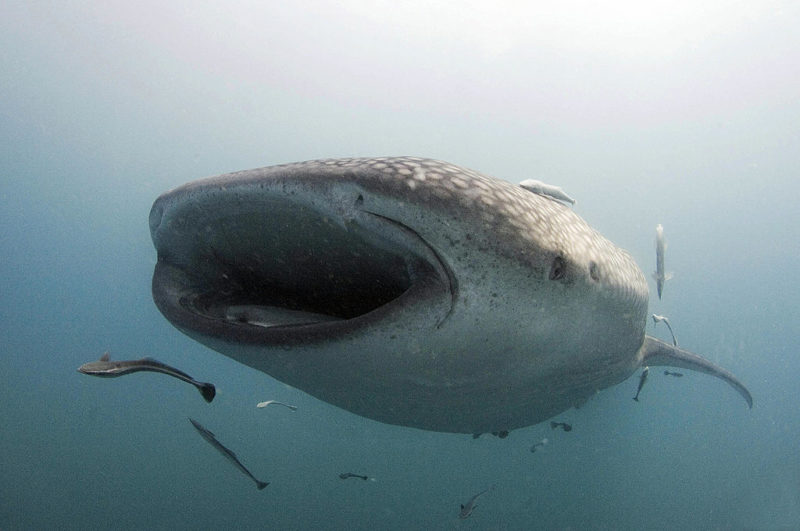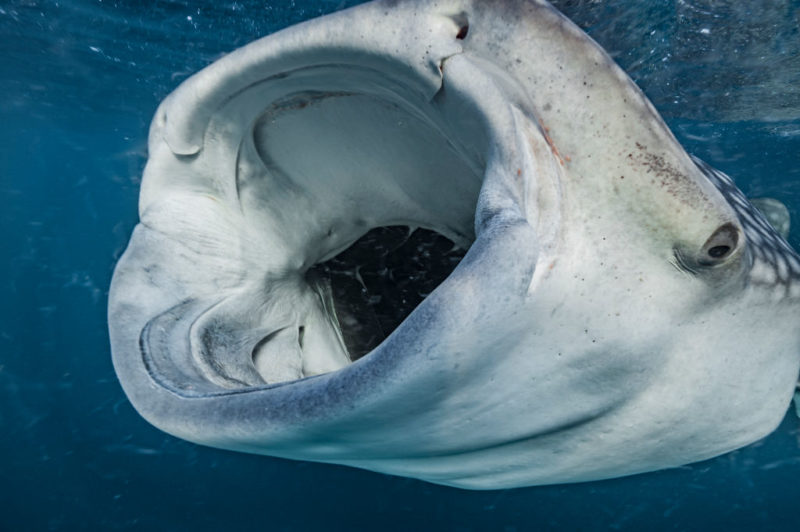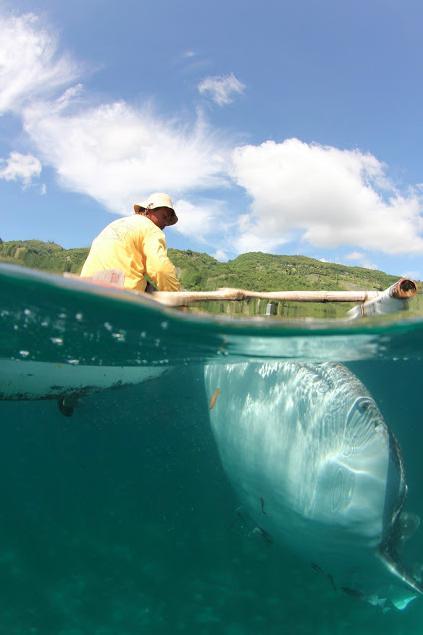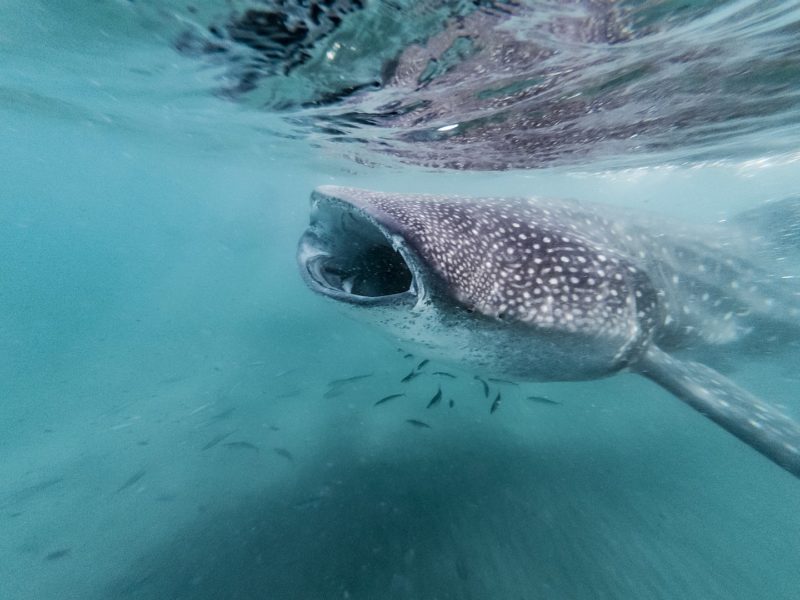The World’s Largest Shark Isn’t a Carnivore – Meet the Whale Shark
Sharks have become an important part of American culture. While there’s always been a fascination with the sea creatures, they received a boost in popularity following the theatrical release of Jaws, and interest has only grown with Discovery Channel’s annual Shark Week.
Part of the intrigue has to do with the danger sharks pose – there were 73 confirmed unprovoked attacks in 2021 – so you might be surprised to learn that the largest shark in the world won’t go after humans. In fact, it doesn’t even eat meat.
The whale shark is massive

When whales aren’t factored into the equation, the whale shark is the largest sea creature in the world. The average male can grow to between 26 and 30 feet long, with some coming in at 72 feet. The weight of the whale shark can run up to around 15 tons.
Despite their eventual massive size, whale sharks can be quite small at birth. In 2009, scientists in the Philippines discovered one that was only 15 inches in length. Males grow at a faster rate than females, but there isn’t much of a size difference when they reach full maturity, which is typically around 25 years old.
Whale sharks have an interesting diet

Unlike other sharks, the whale shark does not seek out meat. The animal is a filter feeder, and like many species of whale relies on the likes of krill and plankton to survive. To feed, they swim near the ocean’s surface and suck in large amounts of water, filtering out the water so that only their prey remains.
A study conducted by the Australian Institute of Marine Science found that krill are a secondary feeding source for whale sharks and that the most important food is actually algae. This was discovered by looking at droppings. Scientist Dr. Patti Virtue explained that “the poo did show that they were eating krill, but they’re not metabolising much of it.”
The research also looked into whale shark tissue. The samples showed the animals had the profile of an omnivore, rather than a carnivore. Being that they’ve been on the planet for millions of years, it’s believed they were at one point carnivores and became omnivores due to the ease of finding algae.
Whale sharks and people

Whale sharks are completely docile creatures and, as a result, pose no threat to humans. Since they swim near the surface, they often come into contact with divers. In fact, juveniles have been known to play with swimmers, and some divers even ride them via their fins. The practice has been discouraged by marine biologists, however, as it can upset the creatures.
The whale shark is revered in the Philippines and appears on its 100 peso note. The country also has a strict law where snorkelers can’t come within four feet of one or touch them. If they do, they can face either a fine or jail time.
Whale sharks are also featured in a number of aquariums. Their large size and friendly nature make them exceedingly popular. Not every aquarium, however, is fit to feature them, as their sheer size means they must be kept in extremely large tanks.
The whale shake population has declined

As filter feeders, whale sharks are threatened by pollution. They can regularly suck up large amounts of plastic when feeding, with studies showing that the large sharks are bothered by the existence of micro-plastics.
More from us: The Weirdest Sea Creatures on the Ocean Floor
As a result of pollution and other factors, the whale shark is now listed as being endangered by the International Union for Conservation of Nature. The Philippines, India and Taiwan have banned people from fishing or selling the vulnerable sea creatures.





